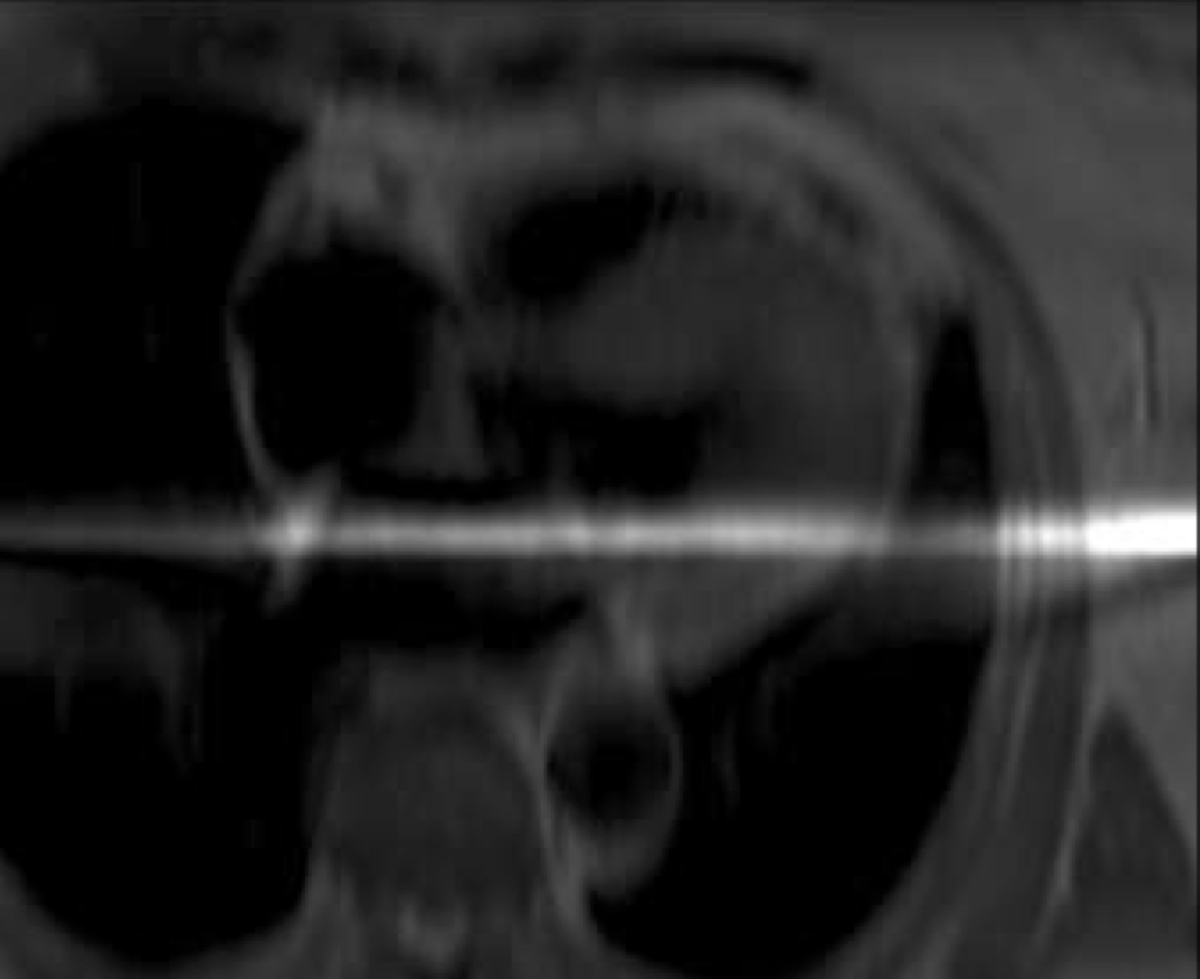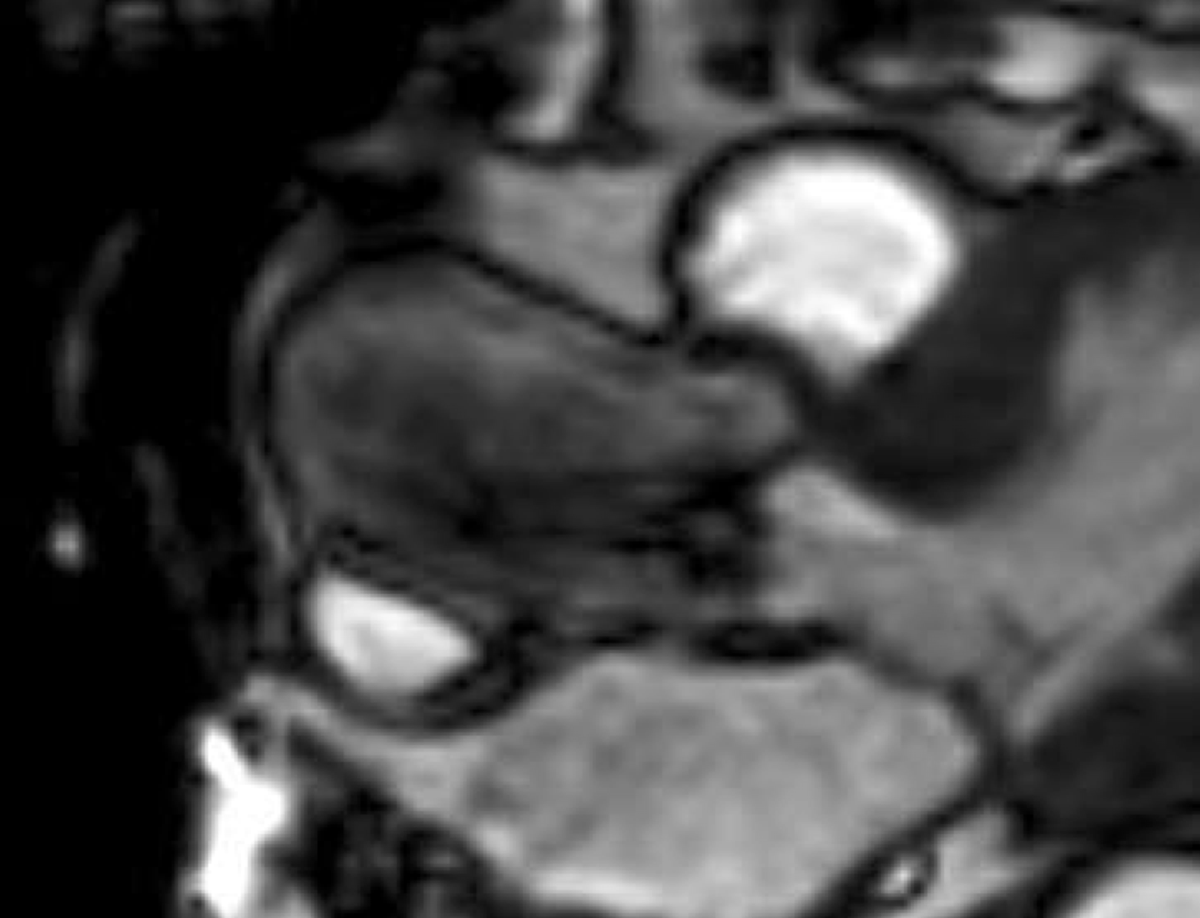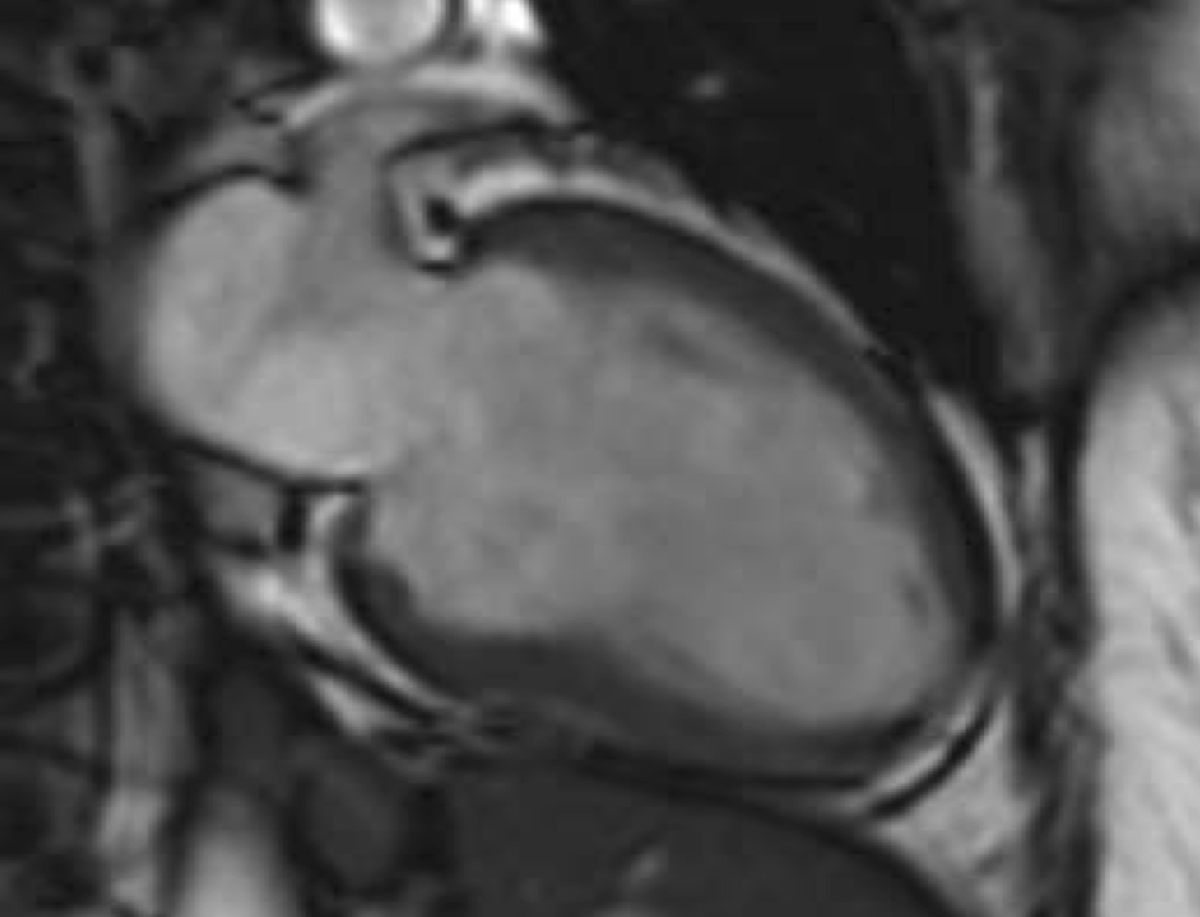| Wrapping artefact (fold-over, back-folding) |

|
|
| Ghosting artefact from motion (respiratory) |

|
|
| Ghosting artefact from motion (pulsatile flow) |

|
|
| Flow-related signal loss and flow jets |

|
|
| Chemical shift artefact |

|
|
| Dark rim artefact |

|
|
| Radiofrequency interference artefact |

|
|
| Slow flow artefact |

|
|
| Metallic artefact |

|
|